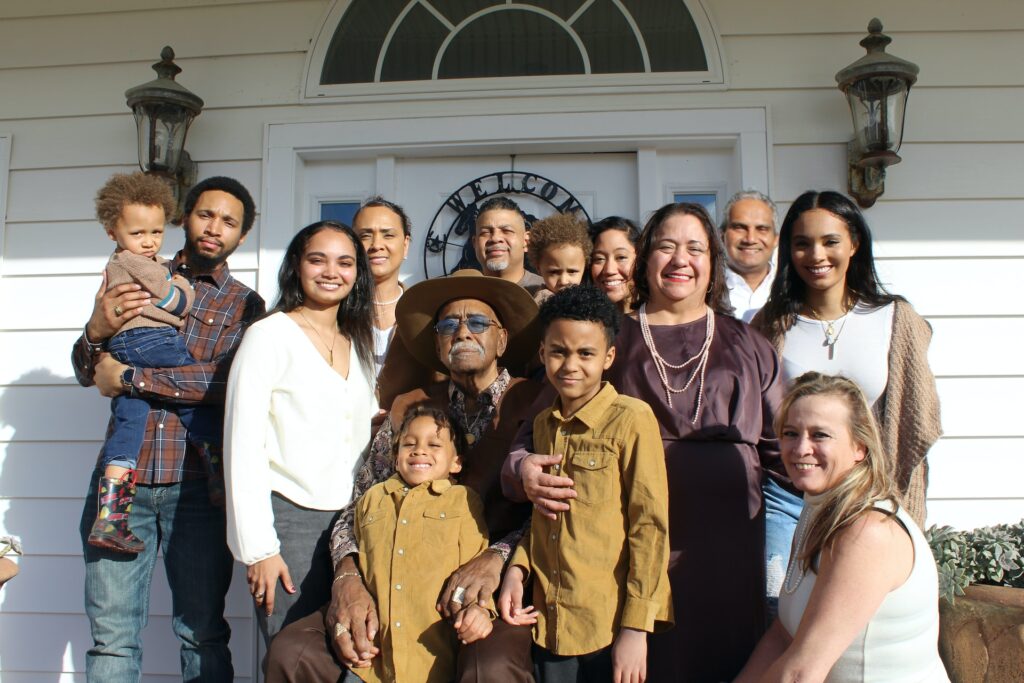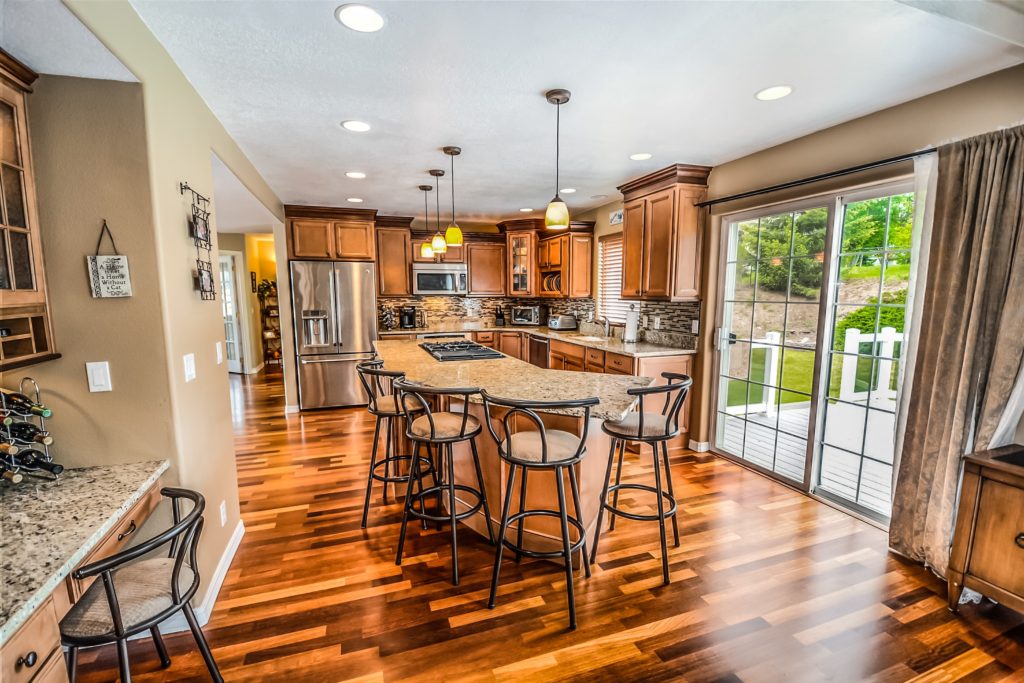
In recent years, it has become increasingly common for multiple generations of family members to share homes. An example is when elderly parents choose to live in the homes of their adult children. To accommodate this living situation, many families are purchasing larger homes that offer independent living spaces for elderly parents. Today, around 20% of all Americans are part of a multigenerational home.
A multigenerational home is one that consists of two or more generations. As a person ages, they invariably experience declining health and a loss of independence. In this scenario, living with other family members becomes more appealing. Keep in mind, however, that there are numerous reasons why people choose to live in multigenerational homes. The following article details what these reasons are and why multigenerational homes are becoming more common in America.
An Introduction to Multigenerational Homes
Multigenerational homes occur when there are at least two generations of adult family members living in the same place. However, these households can take many different forms, which are as follows:
- Three generations – This is a multigenerational living arrangement that involves three generations, which include grandparents, adult children, and grandchildren.
- Two generations – This type of household is one where older parents move in and live with their adult children. It can also involve young adults choosing to live with their parents until they can gain financial security.
- Skipped generation – A skipped generation household is one where grandchildren live with their grandparents.
When multiple generations of family members are living in the same place, it’s possible that every family member is under one roof or that a detached living space is available for elderly parents. Regardless of the arrangement, there are numerous advantages associated with living in a multigenerational home.
Over the past decade or so, multigenerational living has become more widely adopted. While this type of living arrangement was relatively common in the middle decades of the 20th century, a significant decline occurred until the 1990s. Since the final years of the 20th century, multigenerational homes have become more prevalent with each passing year.
In 2008, around 49 million people in the U.S. were living in a multigenerational home because of the financial crisis. However, these numbers have grown rapidly over the past decade. In 2011, only 7% of Americans stated that they took part in multigenerational living. In 2021, this number grew to 26%.
According to a 2021 report by Generations United, the number of people in the U.S. who responded that they live in a household with at least three generations increased by over 270% between 2011-2021.
Today, more than 66 million adults above the age of 18 are part of a multigenerational household. Nearly 60% of these individuals state that they began to live together as a result of the COVID-19 pandemic. Over 70% of respondents are going to continue living together on a long-term basis. It’s clear that multigenerational living will remain popular for the foreseeable future. To accommodate these changes, policies pertaining to healthcare, family support, home design, and jobs may need to be altered.

Reasons for Multigenerational Living
There are numerous reasons why people are choosing to take part in multigenerational living, the primary of which involve financial reasons. Maintaining a multigenerational household helps everyone who lives there save a considerable sum of money. Along with cost savings, this type of living is appealing because it allows people who are having difficulty affording housing to still live in a residential home.
Around 50% of lower-income adults who are living in a multigenerational household say that the situation helps them financially. In comparison, 24% of upper-income adults and 36% of middle-income adults say the same. While financial reasons are among the most common for people to stay in these households, another reason that’s often cited is the need to care for aging relatives. Instead of having these individuals live by themselves, their adult children will care for them in the comfort of their own home. This situation is more convenient for all parties involved.
Family members have also considered this living arrangement in order to share household responsibilities and chores. The amount of maintenance that’s needed to keep a home in great condition is difficult to manage. Living in a multigenerational household allows you to more efficiently complete household chores and maintain responsibilities.
In some households, cultural or family traditions are the reasons why people decide to live in a multigenerational household. If this type of living arrangement has occurred with past generations of family members, it’s less likely that the current generations will diverge from this tradition.
Impacts of Multigenerational Living
The impacts of multigenerational living are readily apparent once the decision is made. For one, people who live in multigenerational households benefit from increased family support and caregiving. Family members get to spend more time with one another, which helps strengthen relationships and makes it easier for these individuals to give each other support when necessary.
Seniors can better connect with their grandchildren as well as their adult children in a manner that’s more difficult when living in separate households. If an elderly family member is in need of more comprehensive care, their adult children can provide this care without needing to worry about making arrangements for nursing homes or other forms of elderly care.
The rising costs associated with basic goods means that family members who live in the same household can ease their financial burdens by sharing expenses. For instance, mortgage costs can be evenly divided. It’s also possible for elderly parents to chip in for other expenses. Regardless of how expenses are shared, every member of the family should find it easier to build their savings while living in a multigenerational household.

Demographics of Multigenerational Living
Every demographics has slightly different views on multigenerational living. Between 1971-2021, census data shows that the number of people who are living in multigenerational households has practically quadrupled. Part of this increase is because of immigration. While White Americans are somewhat likely to live in multigenerational homes, the U.S. Hispanic and Asian populations have experienced a rapid growth when it comes to this type of living. The same is true with Black Americans. The breakdown of demographics for multigenerational living is:
- White Americans – 13%
- Hispanics – 22%
- Black Americans – 23%
- Asians – 25%
Since 1980, the rates of multigenerational living among White Americans, Asians, and Hispanics have increased substantially. All four groups saw significant increases in multigenerational living following the financial crisis of 2007-2008.
Policy Implications of Multigenerational Living
With the rapid rise in multigenerational living, there are some potential policy implications that should be explored. For instance, there’s a higher need for more affordable housing options. While many people choose to live in a multigenerational household because they believe the benefits far outweigh the negatives, this living arrangement is a necessity for some because of the financial difficulties that are more prevalent in today’s economy. Creating more affordable housing may alleviate this issue somewhat and reduce the percentage of people who are living in a multigenerational home.
Current zoning laws and regulations can make it difficult for developers to build homes that accommodate multiple generations. To mitigate this issue, local building authorities should make changes to the building code that facilitate multigenerational properties.
It’s also possible that immigration policies will impact the current trend of multigenerational homes being more popular. If immigration policies become stricter in years to come, the number of people who maintain a multigenerational living arrangement may dwindle. On the other hand, more open immigration policies may result in a higher percentage of people making use of this living arrangement.

Pros and Cons of Multigenerational Living
Before you agree to live in a multigenerational home, consider the pros and cons of this arrangement. As touched upon previously, there are ample financial benefits. You can divide the costs for your mortgage, groceries, utility bills, and any other expenses that apply to the entire household. By reducing your monthly expenses, it should be easier for you to build your savings, take vacations, and apply for loans.
The social connection among multiple generations of family members should also be stronger while you’re living together. If adult children need advice from their parents, they no longer need to call or write a text. Grandparents will also benefit from being able to see their grandchildren more often. For elderly individuals, living alone often increases the feelings of loneliness, which is an issue that can be easily resolved with multigenerational living. Additional benefits include:
- Managing health conditions
- Assisting during an emergency
- Allowing for a family member to go back to school or undergo training for their career
There is, however, a major issue that people often encounter when living in a multigenerational home, which involves resolving conflicts about space or privacy. If you haven’t lived with your parents for years, it can take time to become accustomed to a new living situation.
Conclusion and Future Outlook
Because of high interest rates and an uncertain economy, an increasing number of people are exploring the idea of living in a multigenerational home. Whether you decide to live with your parents or have them live in your home, multigenerational living arrangements can take many different shapes.
At the moment, U.S. housing regulations and building codes don’t perfectly accommodate multigenerational living. However, the percentage of Americans who are expected to live in this type of home should continue to increase in the years to come, which means that building codes will need to change. If you’re considering living in a multigenerational home, you should first weigh the pros and cons to ensure you’ve thought of everything before making a final decision.